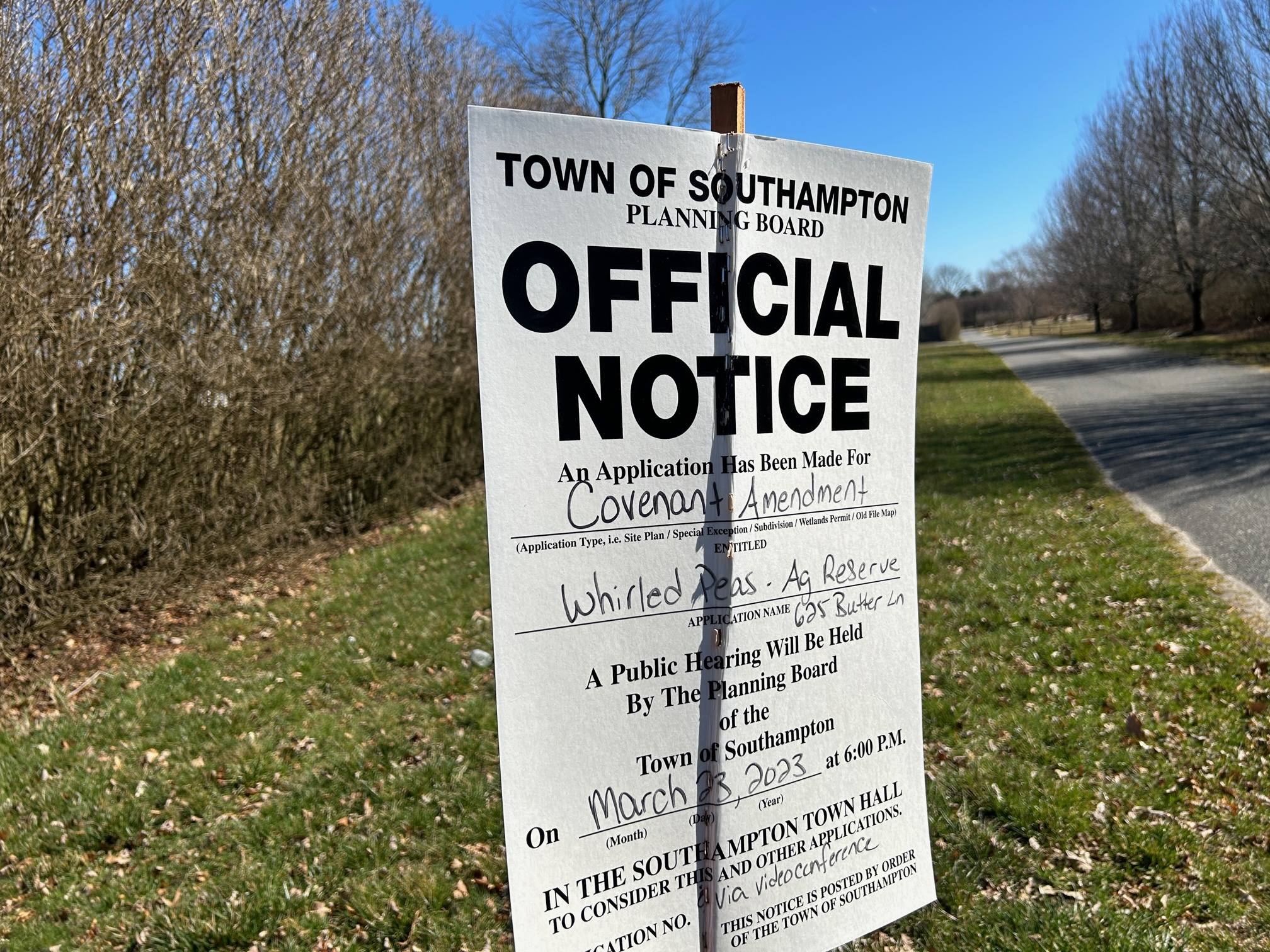
Is there a farm if there’s no farmer? That was one question that raised the brows of members of the Southampton Town Agricultural Advisory Committee as they reviewed a request to change the building envelope on an agricultural reserve on Butter Lane farmland in Bridgehampton.
The application before the Southampton Town Planning Board, set for public hearing on the evening of Thursday, March 23, garnered adamant commentary in opposition from the committee members.
The proposal has been the focus of consternation from neighbors who believe setting what’s described as a greenhouse or agricultural structure in the middle of the property violates a covenant on the land. They suspect the structure will ultimately be a house.
In a bluntly worded letter to the town land use division, stamped in on March 15, the committee, like the neighbors, looked quizzically on the use of the land. Voting unanimously in opposition to moving the building envelope, they wrote, “… it seemed like a bad idea because we were unconvinced that there was a bona fide agricultural reason for doing so.”
“It’s easier to explain what this application lacked, as opposed to what it proposed,” the missive continues.
It lacked an actual farmer who could explain why he or she wanted to place a structure in the middle of a field; traditionally structures are put near an access point or utilities. The committee agreed there may be valid reasons for siting the building envelope in the middle of an agricultural reserve, stating “we just did not know of any. Especially any that could outweigh the impact of such unknown structures on the primary goal of the 1996 easement which is to preserve and keep open for agriculture these specific agricultural soils.”
None of the attorneys who spoke to the committee considered the potential destruction of agricultural soils, committee members noted.
“A farmer can explain almost every inch of his or her farm,” the referral letter continues. “Not just what it currently is, but what it was and what it one day may be.”
An agricultural reserve is one that has both limits and potential, committee members felt. The easement’s limits are designed to protect the land from residential development while allowing for the potential for agricultural development. Based on applications they have reviewed, the letter continues, “We, as farmers and members of the Agricultural Advisory Committee, are concerned that many agricultural reserves are being developed and utilized in ways that undermine the innovative and determined goal of farm and farmland protection in the Town of Southampton.”
Before any changes are permitted, the committee called for an inspection of the property — to make sure it complies with the terms of its original easement and New York Agriculture and Markets law. “Determining the agricultural use of this property will help define its actual needs,” the letter concludes.
Members of the advisory committee are: Marilee Foster, Julie Wesnofske, Erik Bilka, Kenneth Tillotson, Kristin Kraszewski, Raymond Wellen, Ross Conklin, Jennifer Halsey-Dupree, Jagger Topping and Peter Ludlow.
Foster, the chair, this week emphasized the committee’s opinions are advisory in nature. “We’re really just there to give the Planning Board a little guidance.” She said advisory committees “give a sounding board within the community.”
“We haven’t seen it all, but we just don’t see what’s happening on this property,” she said. “In order for this to make sense, we need to know what the use is.”
There might be a good reason for placing a building in the middle of the property, Foster offered, but, “unless that reason is being shared with us, from an agricultural perspective, it’s really hard to say, ‘Hey, this is a great project.’”
How agricultural easements are used is “a very large problem in the Town of Southampton,” Foster said, reluctant to single out the Butter Lane farmland for criticism. “People see opportunity on them, but it’s just not opportunity, it’s agricultural opportunity.
“The idea behind the ag easements is to preserve, no matter who owns the property, to preserve its use as agricultural property,” Foster said. Reserves are not accessories, the farmer continued. “There’s a use prescribed to them, which is agricultural.”